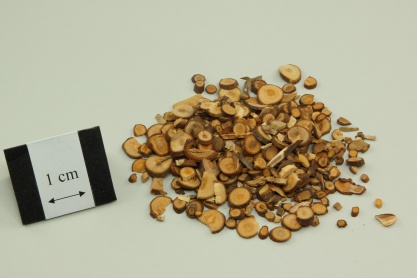- ENG
- Cassia Twig
- LATIN
- Cinnamomi Ramulus
| Medicinal Group | Wind-cold-dispersing medicinal |
|---|---|
| Source | Dried young branch of Cinnamomum cassia Presl (Fam. Lauranceae) |
| Nature and Flavors | pungent, sweet; warm |
| Meridian Affinity | Heart, Spleen, Lung |
| Actions | To induce perspiration to release the exterior, release the flesh, warm the channels and stimulate menstruation, reinforce yang, relieve palpitation, and send down adverse rising qi. |
Family
Part used
Indications
Common cold; epigastric pain with cold feeling; amenorrhea due to cold in blood; arthralgia; edema; cardiac palpitation; gastro-intestinal neurosis with a feeling of gas rushing up through the chest to the throat from the lower abdomen
Research Findings
- Both vivo and vitro results indicated Guzhi Fuling capsule possessed a significant spasmolytic effect on uterine titanic contraction. [1]
Cautions
The pungent flavor and warm nature of Cassia Twig can injure yin and move blood. Contraindicated in illnesses of heat, yin deficiency with yang hyperactivity, and heat in the blood.
Report on adverse effect
Reference
Reference
- Lan S, Liu L, Zong S, Wang Z, Zhou J, Xu Z, Ding G, Xiao W, Kou J. (2016) Traditional Chinese medicine Guzhi Fuling capsule used for therapy of dysmenorrhea via attenuating uterus contraction. J Ethnopharmacol 191: 273-279












